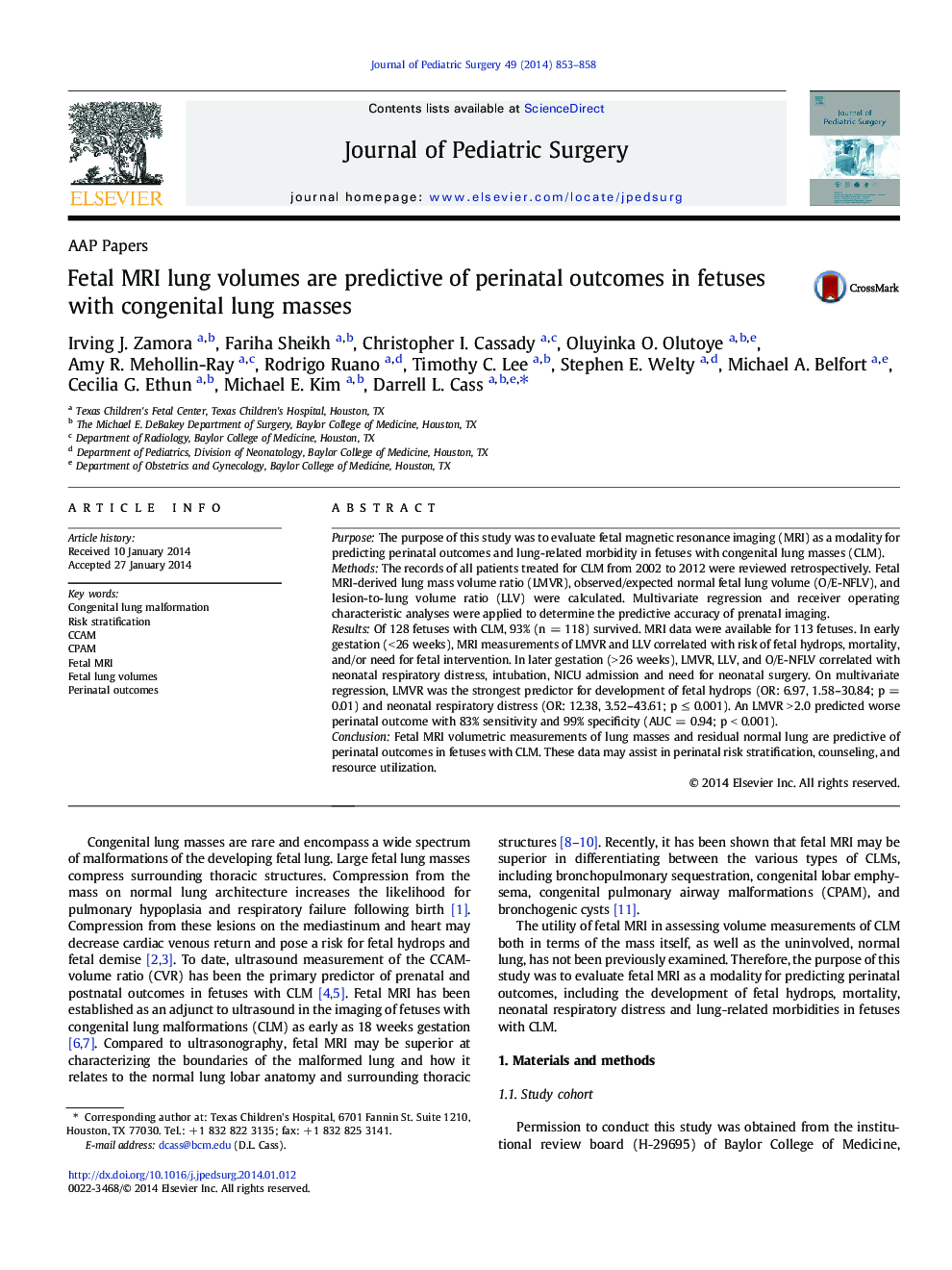| Article ID | Journal | Published Year | Pages | File Type |
|---|---|---|---|---|
| 6217328 | Journal of Pediatric Surgery | 2014 | 6 Pages |
PurposeThe purpose of this study was to evaluate fetal magnetic resonance imaging (MRI) as a modality for predicting perinatal outcomes and lung-related morbidity in fetuses with congenital lung masses (CLM).MethodsThe records of all patients treated for CLM from 2002 to 2012 were reviewed retrospectively. Fetal MRI-derived lung mass volume ratio (LMVR), observed/expected normal fetal lung volume (O/E-NFLV), and lesion-to-lung volume ratio (LLV) were calculated. Multivariate regression and receiver operating characteristic analyses were applied to determine the predictive accuracy of prenatal imaging.ResultsOf 128 fetuses with CLM, 93% (n = 118) survived. MRI data were available for 113 fetuses. In early gestation (< 26 weeks), MRI measurements of LMVR and LLV correlated with risk of fetal hydrops, mortality, and/or need for fetal intervention. In later gestation (> 26 weeks), LMVR, LLV, and O/E-NFLV correlated with neonatal respiratory distress, intubation, NICU admission and need for neonatal surgery. On multivariate regression, LMVR was the strongest predictor for development of fetal hydrops (OR: 6.97, 1.58-30.84; p = 0.01) and neonatal respiratory distress (OR: 12.38, 3.52-43.61; p â¤Â 0.001). An LMVR > 2.0 predicted worse perinatal outcome with 83% sensitivity and 99% specificity (AUC = 0.94; p < 0.001).ConclusionFetal MRI volumetric measurements of lung masses and residual normal lung are predictive of perinatal outcomes in fetuses with CLM. These data may assist in perinatal risk stratification, counseling, and resource utilization.
